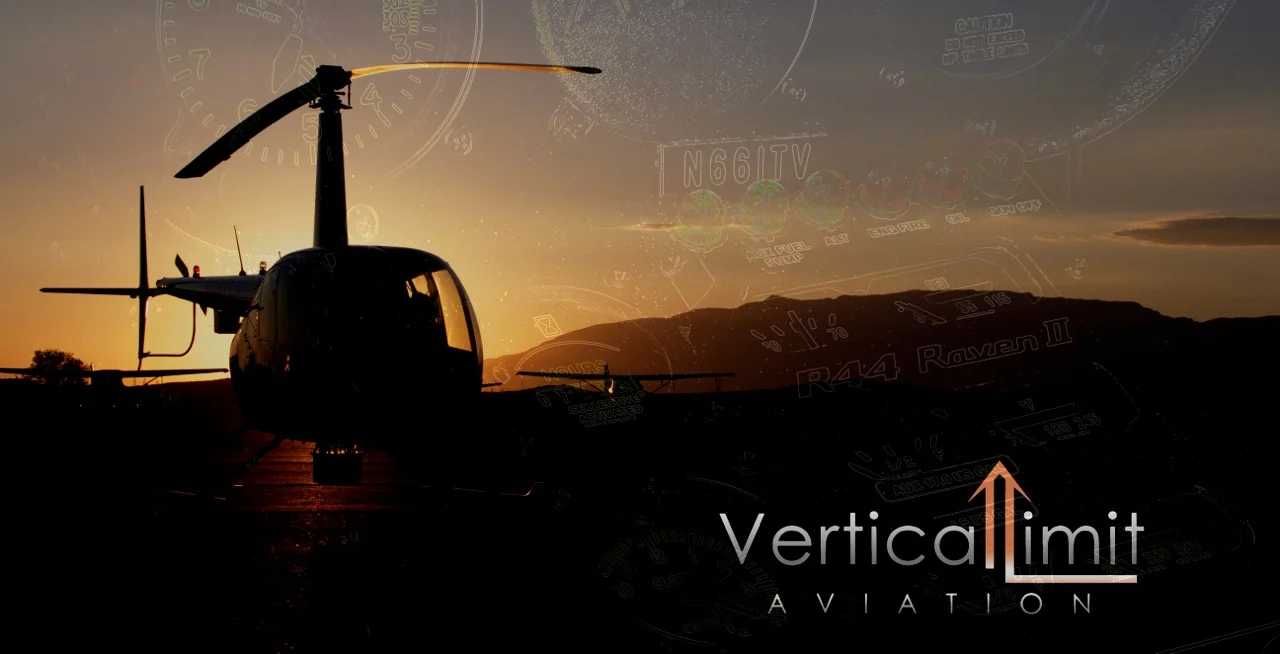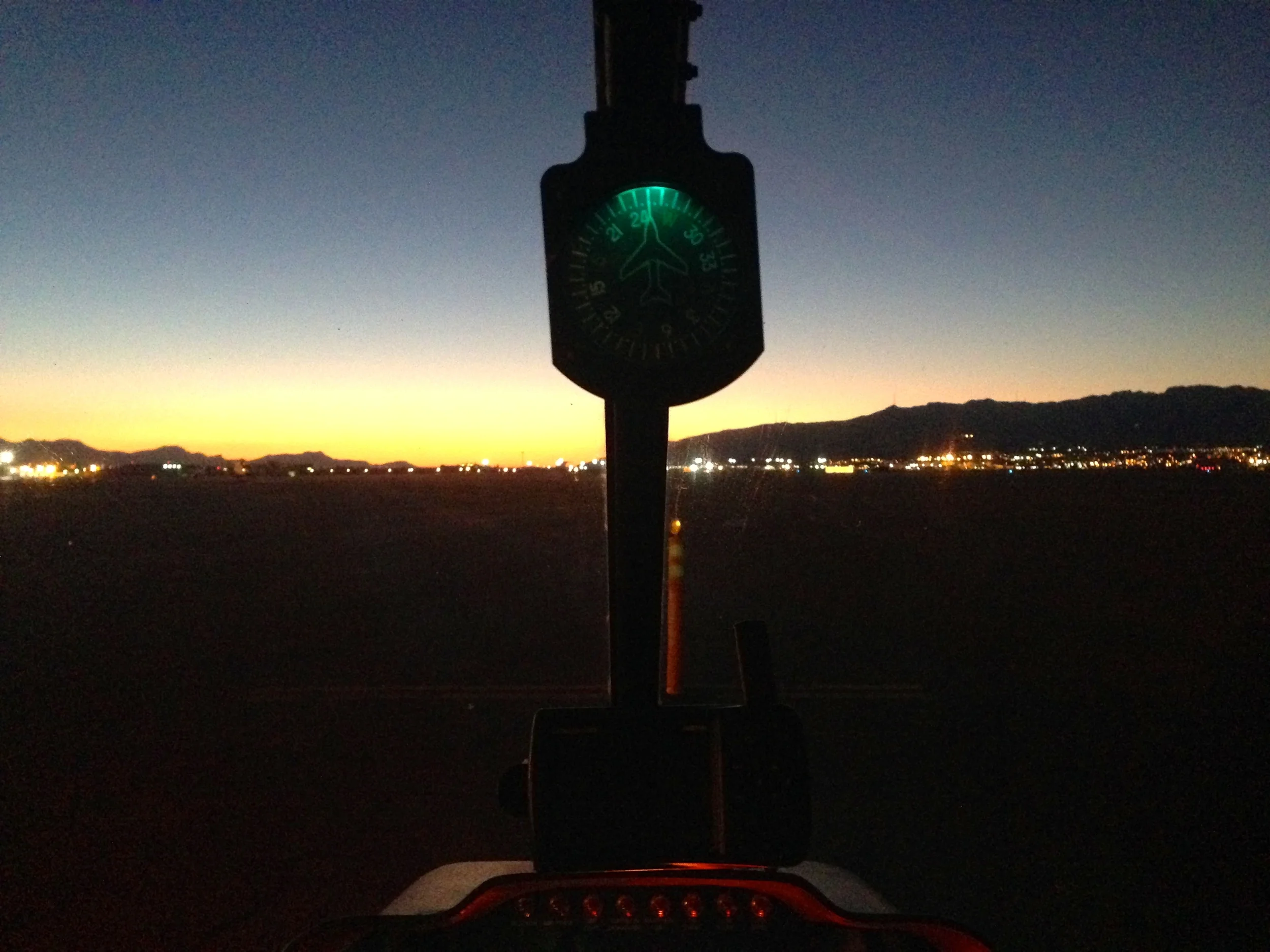
Book a Flight!
Book a Flight!
Start Flight training today!

FLIGHT TRAINING
FLIGHT TRAINING
BECOME THE ABSOLUTE BEST PILOT YOU CAN BE
LEARN TO FLY AT HIGH ALTITUDE IN BEAUTIFUL NEW MEXICO!
New Mexico’s unique terrain, altitude, and weather have allowed our instructors to develop a path to teach you to fly at the Helicopter’s limits; High Altitude, High Temperatures, High Winds, and High Density Altitude. When you train in these extreme flying conditions, you will develop Higher Skill Levels than your counterparts that have developed their skills in much more forgiving environments. Vertical Limit molds our students into proficient and competent pilots and prepares you to succeed in the aviation industry. Although nobody can guarantee employment, we pride ourselves in our track record of employment within the ever growing aviation industry after completion of our Pilot program. We look forward to continuing that tradition with you. Come take a discovery flight at either Vertical Limit Aviation location in Albuquerque or Santa Teresa, and see why we are not only the premier flight school in New Mexico but why we are the premier flight school in the United States. Whether it’s for pleasure or for career, we offer everything you need to stop dreaming and start flying!
REQUIREMENTS
High School diploma or equivalent
16 years of age
Aviation Medical Certificate
Be able to read, speak, write, and understand the English language
No felony convictions
Most importantly, have the right attitude and motivation to keep pursuing your new exciting career
TRAINING
Private pilot license
Commercial pilot license
Add-on ratings
Instrument rating
Certified flight instructor
Certified instrument flight instructor
High altitude training
Mountainous training
High Density Altitude and Mountain Training
High Altitude
Regions on the Earth's surface (or in its atmosphere) that are high above mean sea level are referred to as high altitude. High altitude is sometimes defined to begin at 2,400 meters (8,000 ft) above sea level.
At high altitude, atmospheric pressure is lower than that at sea level. This is due to two competing physical effects: gravity, which causes the air to be as close as possible to the ground; and the heat content of the air, which causes the molecules to bounce off each other and expand.
Because of the lower pressure, the air expands as it rises, which causes it to cool. Thus, high altitude air is cold, which causes a characteristic alpine climate. This climate dramatically affects the ecology at high altitude.
High Density Altitude
Density altitude is the altitude relative to the standard atmosphere conditions (ISA) at which the air density would be equal to the indicated air density at the place of observation. In other words, density altitude is air density given as a height above mean sea level. "Density altitude" can also be considered to be the pressure altitude adjusted for non-standard temperature.
Both an increase in temperature, decrease in atmospheric pressure, and, to a much lesser degree, increase in humidity will cause an increase in density altitude. In hot and humid conditions, the density altitude at a particular location may be significantly higher than the true altitude.
In aviation the density altitude is used to assess the aircraft's aerodynamic performance under certain weather conditions. The lift generated by the aircraft's airfoils and the relation between indicated and true airspeed are also subject to air density changes. Furthermore, the power delivered by the aircraft's engine is affected by the air density and air composition.
Why Does Density Altitude Matter?
High Density Altitude = Decreased Performance
The formal definition of density altitude is certainly correct, but the important thing to understand is that density altitude is an indicator of aircraft performance. The term comes from the fact that the density of the air decreases with altitude. A “high” density altitude means that air density is reduced, which has an adverse impact on aircraft performance. The published performance criteria in the Pilot’s Operating Handbook (POH) are generally based on standard atmospheric conditions at sea level (that is, 59 oF or 15 oC. and 29.92 inches of mercury). Your aircraft will not perform according to “book numbers” unless the conditions are the same as those used to develop the pub- lished performance criteria. For example, if an airport whose elevation is 500 MSL has a reported density altitude of 5,000 feet, aircraft operating to and from that airport will perform as if the airport elevation were 5,000 feet.
High, Hot, and Humid
High density altitude corresponds to reduced air density and thus to reduced aircraft performance. There are three important factors that contribute to high density altitude:
1. Altitude. The higher the altitude, the less dense the air. At airports in higher elevations, such as those in the western United States, high temperatures sometimes have such an effect on density altitude that safe operations are impossible. In such conditions, operations between midmorning and midafternoon can become extremely hazardous. Even at lower elevations, aircraft performance can become marginal and it may be necessary to reduce aircraft gross weight for safe operations.
Density Altitude
Temperature. The warmer the air, the less dense it is. When the temperature rises above the standard tempera- ture for a particular place, the density of the air in that location is reduced, and the density altitude increases. Therefore, it is advisable, when performance is in question, to schedule operations during the cool hours of the day (early morning or late afternoon) when forecast temperatures are not expected to rise above normal. Early morning and late evening are sometimes better for both departure and arrival.
Humidity. Humidity is not generally considered a major factor in density altitude computations because the effect of humidity is related to engine power rather than aerodynamic efficiency. At high ambient tempera- tures, the atmosphere can retain a high water vapor content. For example, at 96 oF, the water vapor content of the air can be eight (8) times as great as it is at 42 oF. High density altitude and high humidity do not always go hand in hand. If high humidity does exist, however, it is wise to add 10 percent to your computed takeoff distance and anticipate a reduced climb rate.
Training at high density altitude can make you a better pilot by providing you with the necessary skills and knowledge to operate an aircraft in challenging environments. High altitude conditions can pose unique challenges such as decreased engine performance, reduced lift, and thinner air. By undergoing high altitude training, you can learn to overcome these challenges and become a more confident and competent pilot. Our training program is designed to simulate high altitude conditions and provide you with the skills and techniques needed to operate an aircraft safely and effectively in these challenging environments. By learning to anticipate and respond to the unique challenges of high density altitude, you will become a more skilled and versatile pilot, capable of operating in a wider range of conditions. Join our training program today and take your flying skills to the next level.
Mountainous Training
There is no universally accepted definition of a mountain. Elevation, volume, relief, steepness, spacing and continuity have been used as criteria for defining a mountain.[1] In the Oxford English Dictionary a mountain is defined as "a natural elevation of the earth surface rising more or less abruptly from the surrounding level and attaining an altitude which, relatively to the adjacent elevation, is impressive or notable."[1]
For a while, the US defined a mountain as being 1,000 feet (304.8 m) or taller. Any similar landform lower than this height was considered a hill. However, today, the United States Geological Survey (USGS) concludes that these terms do not have technical definitions in the US.
The UN Environmental Programme's definition of "mountainous environment" includes any of the following:[11]
Elevation of at least 2,500 m (8,200 ft);
Elevation of at least 1,500 m (4,900 ft), with a slope greater than 2 degrees;
Elevation of at least 1,000 m (3,300 ft), with a slope greater than 5 degrees;
Elevation of at least 300 m (980 ft), with a 300 m (980 ft) elevation range within 7 km (4.3 mi).
With that being said, mountain flying can be very dangerous if done improperly. Vertical Limit Aviation teaches techniques to minimize risk when flying in mountain conditions. Both High Altitude and Mountainous flight training are logged in your pilot log book as such. This approach to training that Vertical limit Aviation’s instructors have developed allows our student pilots to gain virtual and practical certification and experience that cannot be duplicated in lower altitude and/or lower air density Flight Schools. For those Pilots who fly in a High Altitude and High Density environments quickly realize how invaluable this training and experience can be.
Mountainous Terrain piloting skills are in high demand. Often, access to these terrains is very slow from the ground, and in fact may not even be accessible from the ground at all. When accessibility is there, reaching these generally remote terrains are fraught with dangerous and difficult conditions that can put lives at risk. For these reasons, many industries and government entities are frequently turning to private helicopter services to fulfill transportation, search and rescue, community policing, and surveying in these difficult regions. Specialized operating environments such as this require special skills! Vertical Limit is proud to offer training in the special techniques and methods for flying in the mountains as part of its commercial training and advanced training for commercial pilots.
This course is very important for students planning for future careers flying helicopters in high density altitude conditions. However, this is also a very beneficial program for any helicopter pilot since the training helps to development judgment, planning, and decision making skills. Furthermore, the subtle flying skills needed to operate close to the operating limitations of the aircraft’s performance can be just as useful when flying at lower altitudes with high loads on a hot day. The training received during this course is considered every day operations for commercial helicopter pilots all over the world!







